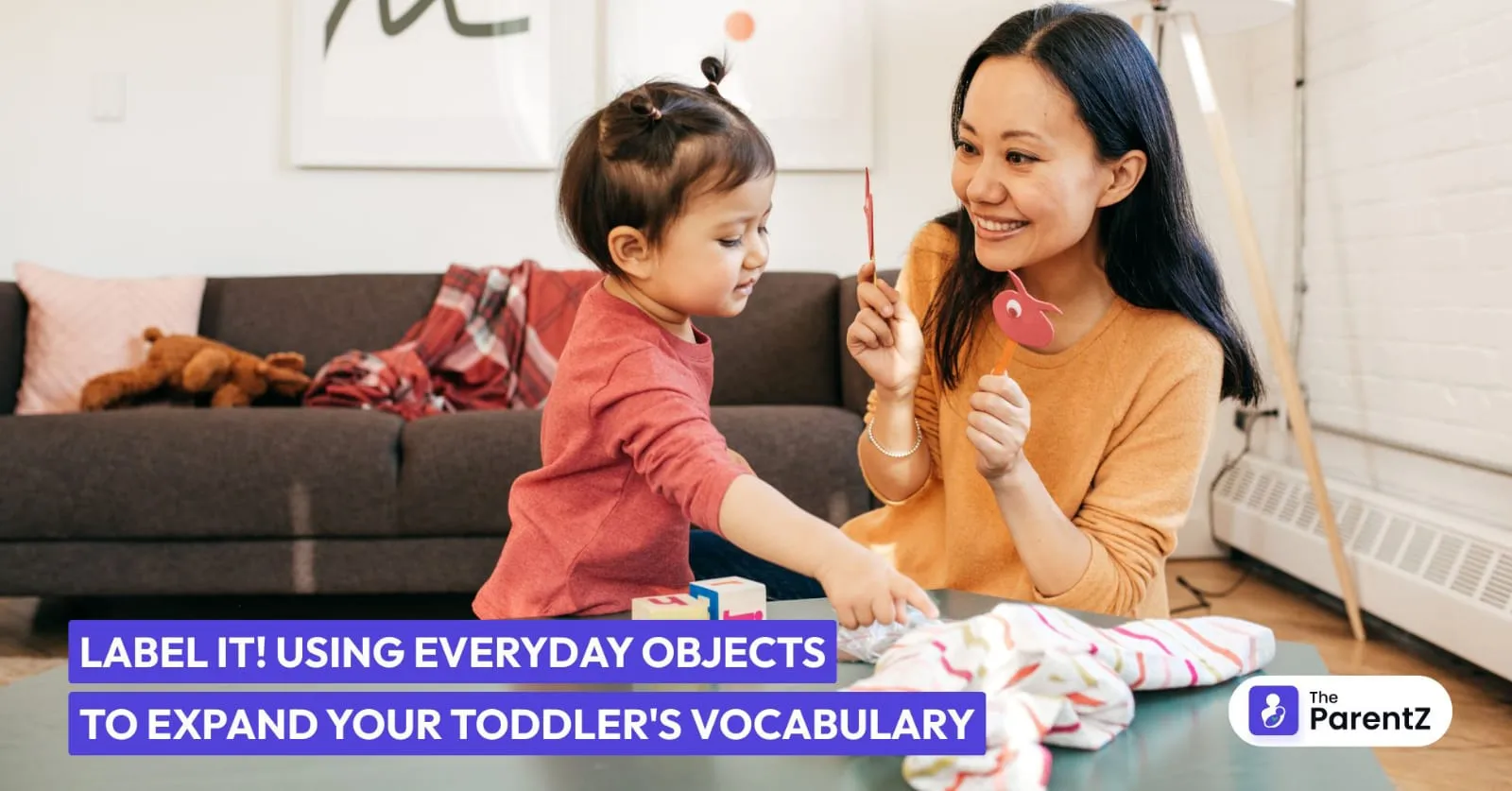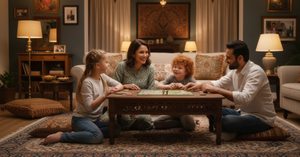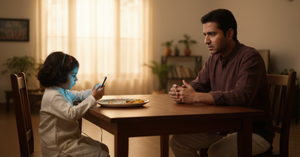Are you doing enough to help your toddler learn new words? Between juggling work calls, endless laundry piles, and trying to remember what self-care even looks like, it can feel overwhelming to also be your child's language teacher. The good news? One of the best ways to build your toddler's vocabulary is already part of your everyday life—no expensive toys or complicated apps needed!
What is "Labeling" and Why It Works Magic
Labeling is exactly what it sounds like—simply naming objects, actions, and experiences throughout your day. "Look, a blue cup!" "Time to put on your soft socks!" "The cat is sleeping." This straightforward practice is actually a language development powerhouse, and here's why:
- It connects words to real-world objects your child can see, touch, and interact with
- It builds vocabulary naturally within your existing routines
- It provides repetition without feeling like a drill
- It happens in real-time, when your toddler is most engaged and receptive
Research consistently shows that children learn language best through meaningful interactions with caregivers, not through passive screen time or flashcards. When you label objects during everyday activities, you're creating those meaningful moments without adding anything extra to your already packed schedule.
Labeling Made Simple: Your Everyday Guide
In the Kitchen
The kitchen is vocabulary heaven! While making meals, narrate what you're doing: "I'm washing the red apple," "This spoon is small," "The water is hot." During meals, label foods, utensils, and actions: "You're drinking milk," "The banana is yellow and sweet."
Bath Time
Water play naturally engages toddlers, making it prime time for language. "The water is warm," "Look at the bubbles floating," "The towel feels soft and fluffy." Describe sensations, objects, and actions as they happen.
Getting Dressed
Name clothing items, colors, body parts, and actions: "Let's put your arms through these sleeves," "These pants have buttons," "Your yellow shirt has a dinosaur on it." This routine happens daily, offering consistent reinforcement.
Out and About
Whether it's a walk around the block or a grocery store run, the world is full of labeling opportunities. "The truck is big and loud," "Look at those purple flowers," "The apple is round and smooth."
Screen Time Reality Check
Let's be honest—screens happen. When they do, try sitting with your child and labeling what's happening on screen: "The girl is jumping," "That dog is brown," "She looks happy." This transforms passive viewing into an interactive language experience.
Keep It Fresh: Going Beyond Basic Labeling
Once basic labeling becomes second nature, level it up with these techniques:
- Add descriptive words: Instead of just "ball," try "bouncy red ball" or "small round ball."
- Include actions: "The ball is rolling" or "You're throwing the ball high."
- Express feelings: "You look excited to play with the ball!"
- Ask simple questions: "Where did the ball go?" or "Can you find the blue ball?"
Common Challenges (Because Toddlers!)
The Silent Treatment
Some toddlers listen intently but don't repeat words back right away. This is normal! Language understanding (receptive language) develops before speaking (expressive language). Keep labeling consistently—it's sinking in even when they're quiet.
Pronunciation Struggles
When your toddler attempts words but says "ba" for ball or "nana" for banana, celebrate these attempts! Instead of correcting, simply respond with the correct pronunciation naturally: "Yes, that's a ball! The round ball is bouncing."
Short Attention Spans
Toddlers flit from activity to activity—that's their job! Follow their lead and label whatever captures their interest in the moment. Brief, frequent labeling sessions throughout the day are more effective than trying to force longer, focused ones.
Screen Distractions
In our digital world, devices compete for attention. Create some screen-free times dedicated to hands-on exploration where labeling can happen naturally. Even 15 minutes of focused interaction can make a difference.
What to Expect: Realistic Outcomes
Every child develops at their own pace, but consistent labeling typically leads to:
- A steadily growing vocabulary
- Earlier sentence formation
- Increased comprehension
- More attempts at communication
- Stronger parent-child connection
Remember that progress might look like your child pointing to objects you've labeled, using parts of words, or simply showing greater understanding when you talk. All these are wins!
When to Seek Support
While variability is normal, trust your instincts. Consider speaking with your pediatrician if, by 18 months, your child:
- Doesn't seem to understand simple words
- Makes few or no attempts to communicate
- Was babbling but has stopped
- Shows limited interest in social interaction
Early intervention, when needed, works wonders.
Conclusion
The beauty of labeling is its simplicity and accessibility. You don't need special training or extra time—just awareness during your existing routines. In today's busy world, where parents are stretched thin, labeling offers an effective way to support language development without adding pressure to your day.
So the next time you're unloading groceries with a toddler "helper," folding laundry with a curious observer, or trying to cook while wearing a baby, remember that these everyday moments are perfect opportunities to build your child's vocabulary, one simple word at a time.








Be the first one to comment on this story.